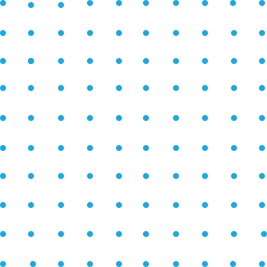The lighting industry has long used translucent glass and plastics for various aesthetic and functional purposes. As lighting shifts from traditional sources to LED-based, solid-state lighting technology, the materials used for effective light diffusion have also changed. Focused light diffusion relies on a good partnership between a light source and the plastic or film cover used.
LED lights offer many benefits, such as energy efficiency, lifespan, and control, but there can be challenges, such as dealing with glare and uneven coverage. Over time, lighting specialists have worked to find the best plastics and films for light covers to address these issues.


An Expert is just around the corner.
With over 100 years of combined product knowledge and industry experience, we are confident our plastics experts can help you find a solution for your application.
Choosing an Optimal Polymer
You have choices when selecting a polymer material for a light-diffusing cover or lens. Generally, the most significant feature is transparency. The polymer must be transparent in its unaltered form to minimize any lighting efficiency loss during LED light diffusion.
Here are the most popular materials used in lighting covers and light boxes for effective diffusion:
Acrylic Sheet
Acrylic tends to have the best optical properties for most uses. It offers excellent light transmission, diffuses LED hot spots, and is easy and inexpensive to fabricate. Acrylic tends to have outstanding optical properties, is the best light transmission of any plastic, and is naturally UV-stable.
You’ll most often find it used in commercial lighting fixtures, POS displays, and backlit signs.
Polycarbonate Sheet
Compared to most acrylics, polycarbonate materials are more robust and more durable. In addition, they can operate at higher temperatures and have better flammability characteristics. Polycarbonate sheet and film offer sound light transmission and excellent diffusion of LED hot spots like acrylic. It also features good impact and heat resistance. In addition, polycarbonate sheet can be cold-formed into complex shapes such as curved light diffusers.
Unique grades of polycarbonate can be manufactured to meet the strict requirements for aircraft and mass transit lighting.
Learn More
-
Cast Acrylic
Discover versatile, high-quality cast acrylic from Piedmont Plastics, ideal for durable, customizable applications across various industries. Contact us for tailored solutions.
-
Polycarbonate
Polycarbonate is a high-performance, impact-resistant thermoplastic known for its clarity, strength, and weatherability, making it suitable for applications such as eyewear lenses, bullet-resistant glass, construction materials, and automotive parts.
Understanding the Advantages of Acrylic and Polycarbonate
There is no clear answer when comparing acrylic and polycarbonate for light-diffusing applications. Both are similar in price. Both can be simple to manufacture. Both have near-identical optical properties. Even the advantage polycarbonate naturally has in heat resistance can be canceled by modifying the acrylic sheet for greater resistance. A lot comes down to application requirements and the advantages of each material:
Benefits of Acrylic and Polycarbonate
Impact Strength
Acrylic will shatter when hit with enough force. Polycarbonate is virtually unbreakable. This is why polycarbonate is often chosen as face shields and safety goggles.
Scratch Resistance
Acrylic is significantly more resistant to scratches and abrasions than polycarbonate. While the difference in resistance can be reduced by adding special coatings to polycarbonate, acrylic still comes out ahead.
Flammability
Acrylic is a moderately flammable polymer, and no additives currently exist to reduce this. Polycarbonate has an inherent resistance to fire which can be increased with additives without losing transparency. While most LED lighting fixtures do not emit much heat, they can still be a factor in some settings.
Weatherability
Acrylic is exceptionally resistant to weathering and is UV-resistant, making it a popular choice for outdoor use. On the other hand, polycarbonate is more vulnerable to UV exposure and will yellow and crack over time. This difference can be mitigated with additives, but acrylic still stands up better to outdoor conditions.
Optics
Acrylic beats polycarbonate by a few percentage points for light transmission. Acrylic sheet tends to transmit 92% of all light, whereas polycarbonate sheet transmits about 88%.
Light Diffusion And Clarity
Light diffusion level—also referred to as haze—is the amount of light that is subject to wide-angle scattering. Light diffusion measurements are determined by a light transmission meter or haze meter. Medium-to-high diffusion levels can be a good sign of excellent system performance. However, at extremely high levels, haze meters have difficulty differentiating between different levels of light diffusion.
In addition to diffusion, acrylic and polycarbonate sheet can be measured for clarity. This is how well small details can be seen through the material. For light-diffusing applications, transparency is less important, but you do want to see good light transmission.
Luminous transmittance is determined by an ASTM D-1003 standard test method used by manufacturers of transparent or semi-transparent products.
Ready To Place an Order?
Piedmont Plastics stocks a range of materials for traditional and LED light-diffusing polycarbonate and acrylic sheet. We also offer run-to-size and CNC cutting services to optimize yields and fit customers’ specific needs. Contact our material experts for more information on light-diffusing materials and how to order them.
Contact Us Today


